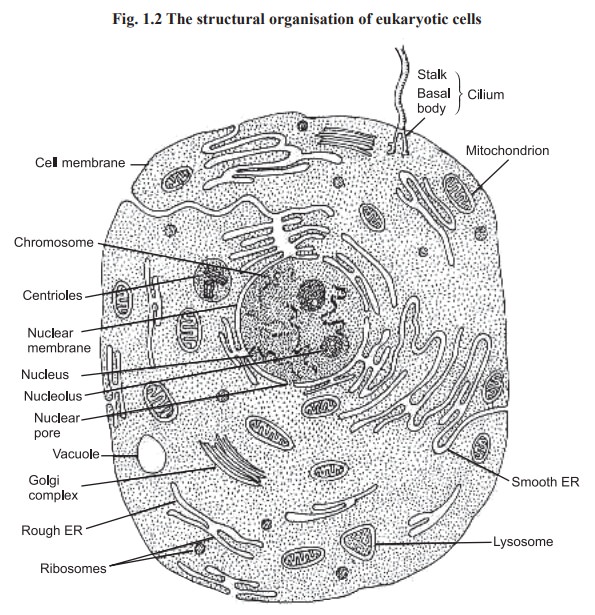Chapter: Biochemistry: Living Cell
Living Cell

LIVING CELL
Introduction
The cell is the basic structural and functional
unit in all living organisms. Living forms vary in size but they are all made
up of cells. In unicellular organisms, the cell is the organ. As an organism
grow in complexity, the cells increase in number and similar cells aggregate
into tissues and organs with specialized functions. The shape of the cell is
often determined by its function and the size of the cell is determined by the
optimum dimensions that will enable it to perform its duties more effectively.
The human body is composed of a multiple of
specialized tissues which inturn consist of vast clusters of cells
differentiated into specialised chemical factories which perform various
biochemical reactions.
Types of cells
Two general types are recognised in nature.
They are prokaryotic and eukaryotic cells.
Prokaryotic cells
Prokaryotes were the first cells to arise in
biological evolution. They are very small and simple having only a single
membrane. The cell membrane, is usually surrounded by a rigid cell wall.
They are devoid of nucleus and membranous
organelles such as mitochondria and endoplasmic reticulum etc. (Fig. 1.1).

Eukaryotic cells
Eukaryotic cells are presumably derived from
prokaryotes. They are much larger and much more complex than prokaryotic cells
(Fig. 1.2).
They have nucleus and membrane bound
subcellular organelles. Many of their metabolic reactions are segregated within
structural compartments. The significant differences between prokaryotic and
enkaryotic cells are:

The eukaryotic cell structure is composed of
(i) cell membrane, (ii) nucleus (iii) mitochondria (iv) endoplasmic reticulum
(v) golgi apparatus (vi) ribosomes (vii) lysosomes and others. These
specialised structural units are called as subcellular organnelles.
Biochemistry today is increasingly concerned with the structure of cells and
their organelles.

Related Topics